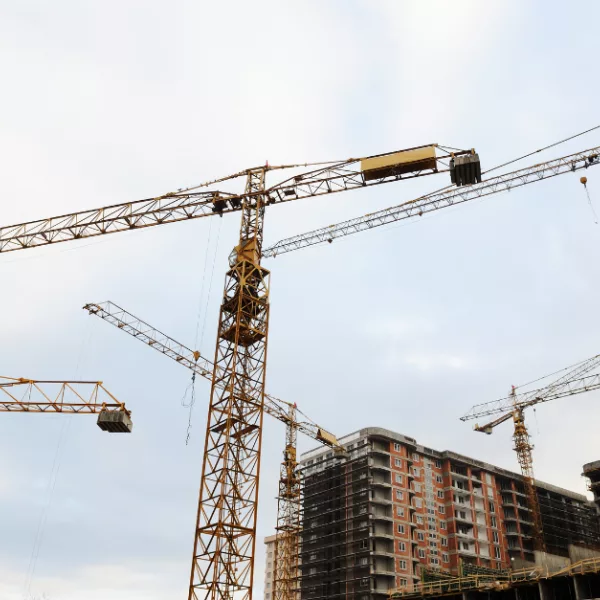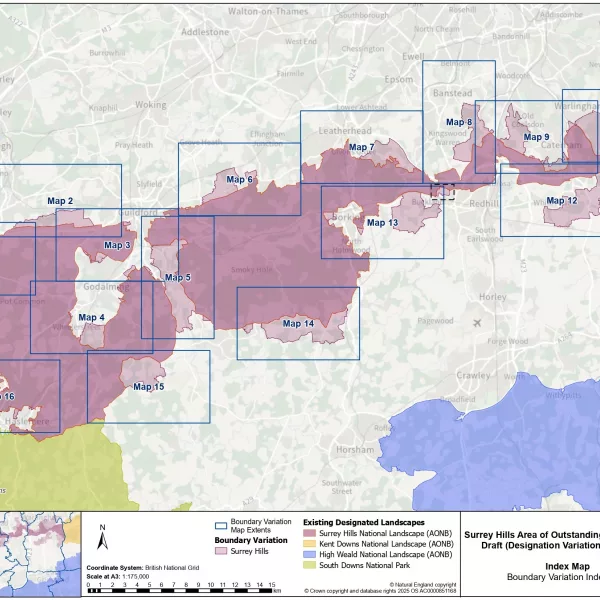
Biodiversity Net Gain – Our Experience So Far
As many of our readers will be aware, Biodiversity Net Gain (BNG) requirements came into force this year which has resulted in an extra element to consider with planning applications. We thought we would share some of our experience so far, which may provide some insights for your next project.
The de minimis threshold
As per the list of exemptions, BNG is not required for developments that do not impact a priority habitat and where the area impacted is less than 25 square metres. This is applied to any land that has any form of habitat, even if poor. One may think a small area of sparse grass or scrub should be exempt, but if it is above 25 square metres, it will be subject to BNG.
This can be challenging for small developments on small sites where there is limited capability to re-provide planting within the site boundary. In addition, sites that previously did not require a walkover survey will now need this to support the BNG calculations and to feed into the initial BNG assessment.
What is the process?
The project’s ecologist will need to carry out an initial survey of the site to identify any existing species and to determine whether any habitats are present. If they are not carrying out the BNG element, the information will be passed onto the relevant BNG consultant for consideration.
The initial survey will determine the baseline BNG value of the site. Any score above zero will result in the planning application being subject to BNG, so even a few blades of grass might count; our point here is not to assume that poor quality land will be exempt.
In terms of BNG requirements, the score then needs to be increased by 10%, so if the site scores an existing BNG value of 1, the proposed development will need to demonstrate a score of 1.1 post-development. This of course becomes more onerous for larger sites with high quality habitats where the baseline value is much higher.
BNG enhancements should ideally be within the site boundary, so we would urge our clients to consider any locations for new planting at a very early stage. If the site provides limited capability for BNG, consideration may need to be given to adjacent land, keeping in mind ownership boundaries.
We have encountered somewhat of a ‘chicken and egg’ situation in terms of the red line boundary and potential areas for planting as it may not yet be known where planting can be accommodated. Some ecologists will only stick to the red line which becomes problematic if BNG cannot be incorporated within the site boundary, potentially resulting in the need for additional surveys if adjacent land has to be utilised for BNG. Such a scenario inevitably leads to additional cost and time. To this end, a point we would stress is if you are unsure where BNG enhancements can be provided, it is worthwhile asking the ecologist to survey areas surrounding the site and make clear that you need them to consider any areas for potential planting.
If the ecologist does not provide landscape plans, you will need to pass on the BNG score and planting recommendations to a landscape architect who will draw up a formal landscaping plan. The plan is then considered by the ecologists who will use it to calculate a post-development BNG score. This is where the project needs to demonstrate your 10% increase.
The whole process follows a sequence which includes four key stages:
- Ecological walkover survey;
- BNG Part 1 Assessment – this calculates the baseline score and provides recommended enhancements;
- Provision of a landscape plan based on recommendations;
- BNG Part 2 Assessment – this calculates the final BNG score post-development.
It is also worth bearing in mind that each stage may be completed by a different person so considering BNG at a very early stage is essential. This is not a swift process and when it overlaps with peak survey season, timescales may be lengthy.
What about greenfield sites with high BNG scores?
If you are dealing with a greenfield site that contains significant habitats, BNG becomes a different animal (or plant?). If your baseline score is high and you are removing any of these habitats, it can be difficult not only to re-provide them on site, but also to demonstrate a 10% increase. This is particularly difficult for sites that contain dense areas of trees and vegetation because there is limited scope to provide enhancements to existing high-quality habitats.
Off-site planting will likely be necessary in these cases which is where land banks may come into play. Land banks are parcels of land owned by third parties, who will allow developers to purchase units for enhancement, thereby providing the ability to demonstrate an increase in BNG elsewhere. We are aware that putting this into the hands of a third party could put developers at risk of breaching their BNG obligations, but it is positive that there are potential off-site solutions. This is still a very new market so time will tell as to how the results will unfold.
BNG is perhaps as complicated as it sounds and it has been a learning curve for all involved, but we are starting to get a better understanding of how it will be applied. The key takeaway is start early, and make sure your ecologist is looking at the bigger picture.
Other news
See all

London Housebuilding: Emergency Measures
The Government and GLA are currently consulting on two documents aimed at stimulating and reviving housing delivery across London, in response to a…...
Read now
Surrey Hills Area of Outstanding Natural Beauty - Boundary Extensions: Last opportunity to make representations
Natural England have given notice of their intention to Vary the Designation Order to include boundary extensions to the Surrey Hills Area of…...
Read now